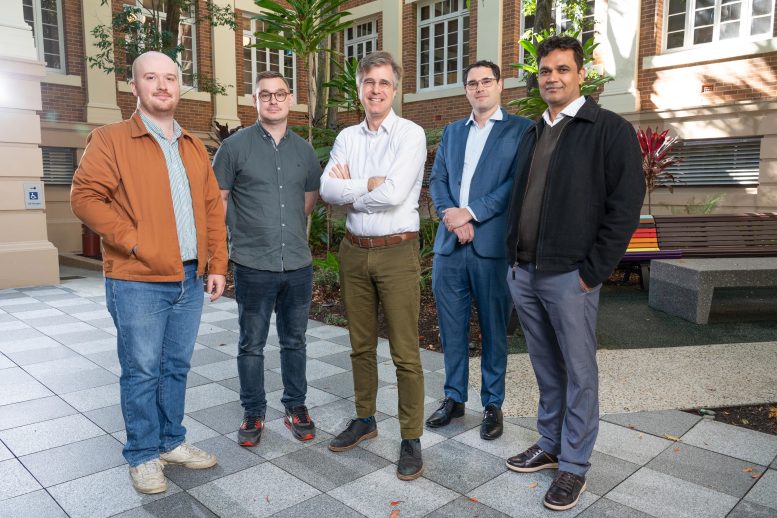
Researchers have uncovered a new mechanism in photochemistry showing that a molecule’s microenvironment can strongly influence how it reacts to light.
A global team of scientists, led by researchers at QUT, is overturning a long-standing belief in photochemistry with findings that could influence areas from healthcare to advanced manufacturing.
Their study, published in the Journal of the American Chemical Society, proposes that the ability of light to drive chemical reactions depends on more than just how strongly a molecule absorbs it.
The group, directed by principal investigator Distinguished Professor Christopher Barner-Kowollik with lead authors Dr. Joshua Carroll and Fred Pashely-Johnson from QUT’s Soft Matter Materials Group, has uncovered a previously overlooked mechanism. They found that the local molecular environment plays a crucial role in shaping how molecules react when exposed to light.
“Since light consists of a spectrum of colours, it has been expected for many years that the colour that is absorbed the most by a molecule will be the most efficient at triggering any photoreactions,” Dr. Carroll said.
“Our experiments confirmed that the microenvironment around each individual absorbing molecule can lead to vastly different properties.”
Red-Shifted Light and the ‘Red-Edge Effect’
The QUT team found that these effects can lead to longer excited-state lifetimes, making certain molecules more reactive under lower-energy, red-shifted light.
The behaviour was linked to a known phenomenon in fluorescence science called the ‘red-edge effect’ and its influence on photochemical reactivity was confirmed through advanced experimental techniques including fluorescence spectroscopy and photochemical action plots.

Fluorescence spectroscopy is a technique used to study the fluorescent properties of substances – that is how they absorb light at one wavelength and then emit light at a longer wavelength. Photochemical action plots show how effective different wavelengths of light are at driving a specific photochemical reaction.
An International Effort
The QUT research team also comprised Dr. Maciej Klein and Associate Professor Ajay Pandey as well as Professor Andreas Unterreiner and Theresa Stephan from the Karlsruhe Institute of Technology (KIT) and Dr. Michael Walter from the University of Freiburg in Germany.
The potential impact of the observed and rationalised effect will enable researchers to develop more sophisticated photochemical technologies in fields such as photodynamic therapy, 3D printing, organic chemistry, solar energy, and many more.
“The implications are enormous,” Professor Barner-Kowollik said.
“By controlling microenvironments, through solvent choice or molecular design, we can tune how light affects molecules, allowing for more precision in photochemical drug delivery, polymer engineerin,g and light harvesting.”
Reference: “Microenvironments as an Explanation for the Mismatch between Photochemical Absorptivity and Reactivity” by Joshua A. Carroll, Fred Pashley-Johnson, Maciej Klein, Theresa Stephan, Ajay K. Pandey, Michael Walter, Andreas-Neil Unterreiner and Christopher Barner-Kowollik, 16 July 2025, Journal of the American Chemical Society.
DOI: 10.1021/jacs.5c06961
The research was supported by the Australian Research Council and the German Research Foundation.
Never miss a breakthrough: Join the SciTechDaily newsletter.